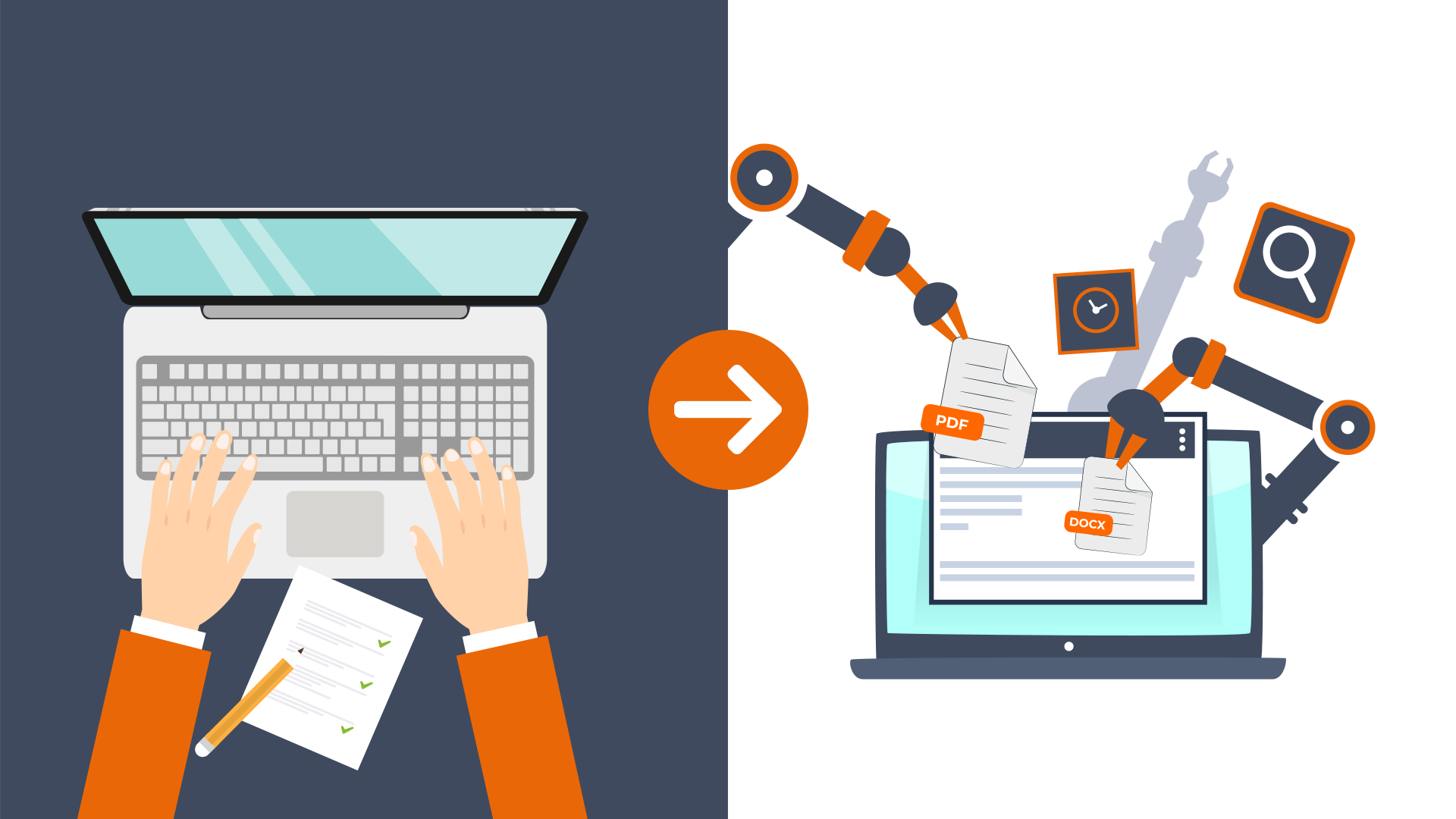Learning both software engineering and artificial intelligence during your internship? Yes, at Mediaan Conclusion, it’s possible! Our aim is to provide an environment where students work on real-life use cases and develop their hard and soft skills simultaneously. In this blog, we highlight one of our internship projects that resulted in a working product that our customers can use! A data entry automation tool that is capable of capturing data from various different templates. Let’s find out more about it!
The use case
Many organizations often deal with documentation that requests a service and “demand” this to be in a specific template. However, most of them try to deal with the requests themselves, regardless of the format. So, what’s the problem? By putting the requests in their own CRM system, imagine the amount of time it takes and how error-prone it must be! This is an excellent example of a use case that can be automated with the use of artificial intelligence, in particularly Natural Language Processing (NLP) and Form Recognition.
To narrow it down for the students, we have decided to take the transportation sector as our first topic. The reason is that we can always find some information related to these requests, no matter which template is used. Think about the requester’s name and address or when and where the package needs be dropped off. At the same time, we want to build the application in such a way so that it would be relatively easy to pick another sector besides transportation.
The approach
The students received an overview of the project, the challenges, pre-filled transportation requests in different templates, along with some tips while giving them free rein over their creativity. The goal was to simulate an environment where the team works on the project and also actively thinks of the best possible solution for the customers. For the most part, we wished for the students to “own” the project, though safety measures were taken into account in case things go out of the right course. Furthermore, we also encouraged them to get used to the Agile way of working — using Sprints, Dailies, End-Of-Sprint-Demos to the customer, and Sprint Retros. Next to that, some workshops were organized to help the students improve their soft skills and help them get familiar with the Agile methodology.

The project within a project
When examining the content of transportation requests, the students concluded that they required more data to create a robust AI algorithm. Instead of asking for more pre-filled templates, the students had the idea to create a tool that would generate data, based on the examples they had. The tool would read a specific template and categorize the fields. Making it easy to differentiate between, for example, a phone number vs. a street number, or a company vs. a street name. Following that, the students generated new values for those fields automatically and used validation tools to make sure it made sense (you don’t want a phone number in your street name). Next to that, using the same template, they also generated a new document. This way, they were able to produce an infinite amount of data to be used to train the algorithm.

Form Recognizer & Data Entry tool
By using Azure Form Recognizer, the team was able to determine the exact position of the required entities to train the Data Entry Tool model. These were then transferred to the corresponding textbox where a person (human-in-the-loop) could verify or modify the data. They are necessary to create a Json, be used in a CRM system, and retrain the current model and increase accuracy. During this process, color codes and symbols were used to indicate the “confidence level” of the algorithm. Using categories, we further improved the work of the “human validator”. This way, it was easier to identify the pickup and/or drop-off location or consignee. When a new template is used in the system, we are most likely to opt for general models. Once at least 5 of the same templates are used, a specific model is automatically created to increase the accuracy of the result for that particular company.
Conclusion
We can say that it was a successful project! Not only did it result in a working product, we also got a lot of positive feedback from the students. They learned a lot and were very pleased by the approach we took. If you are a student looking for an internship at Mediaan Conclusion, check out our job page for available vacancies and don’t hesitate to send us an (open) application! On the other hand, if you’re looking for an automated data entry solution for your company, the Mediaan Conclusion team is always ready to help you! In the meantime, you might want to read our data entry use case to get an idea of how we can be of assistance.
This blog is written by Sébastien Bodart – Consulting Project Manager and Internship Supervisor at Mediaan Conclusion
